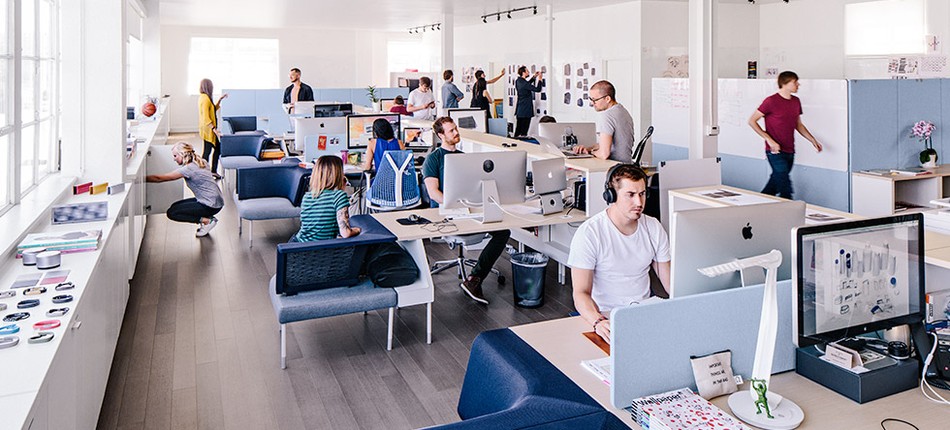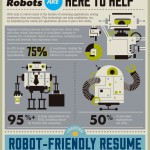Tag archives for: Job Interviews

Whether you are in architecture or another industry, workers
today are finding advantages to switching jobs periodically rather than
remaining with the same company over a lifetime. From bigger paychecks to
higher positions, the benefits of mobility cannot be understated. However, the
way you move from one job to another speaks volumes about your professionalism
as well as your capacity for working well with others. Consider these five tips
to help you change architect positions without burning bridges.
The Time Factor
Giving notice is usually the first step toward moving up and
on. However, how you handle your notice will make a significant impact on how
your current employer views you once you are gone. While two weeks is the general
rule for resignations, you may need to give time depending on your specific
situation. The primary goal is to make the transition from you to your
replacement as smooth as possible without sticking around long enough to make
people feel awkward. When deviating from the two-week guideline, it is not
usually advisable to change that by more than a week either way.
It’s Not What You Know
You know the adage, “It’s not what you know, but who you
know.” Every architect position you hold gives you the opportunity to build
your professional network. You likely have some potentially valuable
connections at your current company, which may prove beneficial in the future.
Take the time to nurture those relationships before and after you switch
companies and be sure to keep your contact information current in case previous
contacts need to be in touch with you.
You Can’t Take it With You
Some things you should leave behind when you leave your
position, such as company data, clients and fellow employees. Soliciting
clients or employees is not an admirable practice and may be a violation of
your contract. Take steps to separate your personal information from the
company data file to avoid any suspicion of impropriety as you move to your
next architect position. An attitude of transparency will make the difference
in leaving your current employer on good terms.
Tie Up Loose Ends
At the same time, you also want to make sure you don’t leave
any loose ends as you walk out the door. Personal belongings should be taken
home with you as soon as you give notice. CNBC
recommends you transfer benefits like your 401k as well. You also want to arrange
to extend your healthcare benefits if your insurance coverage at your new
company does not become effective right away.
Interview at the End Like You Did at the Beginning
Many companies have an exit interview at the end of an
employee’s tenure. While this might seem like a tempting time to raise concerns
or voice complaints, it is always best to keep this meeting just as
professional and positive as your first interview was with the company. If you
do have issues to bring up, do so in a positive way – in the interest of
creating a better environment for your replacement and others.
Architecture Careers
|
Architect, architecture, architecture career, architecture jobs, architecture profession, Careers, Job Board, job hunting, Job Interviews, Job Search, jobs for architects
|

Video Interviews
Top 5 Reasons to try video interviews?
1. Reduces your carbon footprint.
2. Reduces traveling to multiple interviews.
3. Embraces new innovations and technologies.
4. Presents you as a person, not a piece of paper.
5. Employers (9 out of 10) watch video resumes before reading paper resumes. Clients frequently submit their own questions for you.
The benefits of embracing video interviews for the environment are easy to see, but it’s also great at cutting down wasted time in your career search. Think of how tough it can be to schedule interviews at the best firms. Now imagine how easy it could be if the firm could meet you virtually from anywhere, at any time. Best of all, the environment gets a reprieve.
Video Interviews Help Staffing Firms Become More Successful
Staffing firms are a collection of professional Talent Acquisition professionals. But their lives could be made so much easier with video interviews. Many staffing firms employ Talent Acquisition specialists who often find they lack enough time in the day to complete every task, or who become exasperated trying to track candidates down. Using video interviews, staffing firms can help their Talent Acquisition team get their lives back. Find out how:
• Video interviews save staffing firms time. When it comes to finding the right candidate, it’s up to their Talent Acquisition team to source and screen hundreds of candidates for just the right fit. Often, this is done by building talent pools from which to read through matching resumes. Then comes the old phone screen. This can be a cumbersome process. A phone screen could take an hour per employee. However, many staffing firms are increasingly finding that by using video interviews, they’re able to screen more candidates in less time. Imagine the Talent Acquisition pros being able to sit back and collect video interviews on demand from candidates. This means less time trying to track candidates down and schedule formal phone screens. Instead, they can send an email with a link that candidates log onto to prepare their video on demand. Suddenly, staffing firms are able to put the onus on candidates. They can simply sit back and wait for a candidate to record their video interview on demand and send it to the Talent Acquisition professional. Staffing firms, are able to view 10 video interviews on demand in the span of time it takes to do one phone screen.
• Collaboration is enhanced with video interviews. Often, the Talent Acquisition pros in staffing firms feel as if they’re operating in a bit of a vacuum. We’ve heard from many staffing industry pros that they find a great candidate they’d like to share, but it can be difficult to break through the noise of candidate resumes flowing in and collaborate. This can be a frustration of the past. With video interviews, staffing firms are able to view, score and share the top video interviews with their colleagues. This brings more eyes into the process and ensures a better candidate screening overall.
• Video interviews enhance the candidate experience. Of the thousands of candidates we work with per month, we hear a common frustration: their candidate experience is lacking. When candidates apply to jobs through staffing firms, they can feel like little more than a number. Video interviews can help make them feel like they’re going through a personal experience. Live video interviews are a great way for candidates to log on, view welcome videos, and to gain more information on the position they’re applying for. This allows Talent Acquisition to offer more nuance to the candidate. And using the visual medium, it allows them to tell their client’s story better. Candidates love video interviews because they feel it’s more intimate than walking in and finding 10 other candidates also competing for the same position. Video interviews are technologically advanced and offer candidates an immersive experience, allowing both Talent Acquisition and candidates to tell their story better.
- Time to hire shrinks with video interviews. These days, candidates want a shorter time to hire. According to the Bureau of Labor Statistics, time to hire rose from 24.5 days to 29 days in July of 2015. This is due in part to rising hiring quotas and shrinking budgets to actually accomplish increased hiring requirements. As the Baby Boomer generation begins to retire and employers increasingly look to the Millennial generation to fill these roles, time to hire will become increasingly important. Approximately 33% of Millennials report that they get hired within a month’s time. Longer times to hire could potentially scare away the very best candidates.Staffing firms are finding themselves increasingly in demand because of the roaring return of the economy. As more jobs are added to the job market, their Talent Acquisition teams will find themselves struggling to keep up. With video interviews, they can remain ahead of the curve and deliver superior results to their customers. Interested in finding out more? Call us today and schedule a free demo of our video interview software.
The Job Hunt
|
architects, architecture, business, Candidates, Employment, Freelancers, hiring an architect, Job Interviews, jobs, Resumes, unemployed architects, Video Interview
|

And how to please them.
When I saw this article I was excited to share it with the architects and designers that apply to Consulting for Architects! We ask for a few things to represent you, in the best light possible to our customers, including a professionally written resume and your digital portfolio. The first thing we do with your resume is scan it for your contact information and keywords; also known as skills. Sure, this helps us save time creating your file in our database and that’s important – but the real advantage to having a resume crafted to maximize the “robots” accuracy reading your resume. This insures your name will surface above others when we use our automated search function to fill a job opening – as matching your skills is the desired outcome. The rest we leave to our experience as exclusive recruiters to the architecture and design profession and our personal interview, which garners your professional history and current career goals. So when you hear the experts say don’t use your resume to express your creativity, there’s a good reason – THE ROBOTS CAN’T READ IT!
Recruiting technology, like the increasingly prevalent applicant tracking system (ATS), is making it easier and faster for job-seekers to find and apply to their ideal employment opportunities. Talent acquisition professionals also appreciate the multiple benefits of an ATS, one of which is reducing the burden of reading hundreds, if not thousands, of resumes to find the right candidate for a position.
Candidates and recruiters, however, have reported some frustrations with ATSs, blaming them for screening out candidates who are seemingly well-suited for an open position. While it’s easy to make technology a scapegoat, keep in mind this software is simply doing what it was designed to do. The real culprit for the so-called “black hole” of applicant screening technology isn’t the ATS itself, but rather outdated rules for creating a resume.
This old guidance was based on a human being scanning through a pile of resumes, but now robust software performs that task. So rules that were originally designed for human eyes need to be re-thought with technology-based scanning in mind.
It’s time for a real paradigm shift in how we tell job-seekers to write their resumes—rules that will help candidates and opportunities connect in more powerful, easier ways.
CLICK ON THE INFOGRAPHIC THAT SAYS IT ALL!

Hat tip to HireRight
Employment Advice
|
architects, ATS, Candidates, Designer Jobs, Designers, Job Interviews, jobs, portfolio, Recruiting, Recruiting Technology, Resumes, Staffing for Architects
|

Another applicant blows it by describing his short-term goals as "getting this job."
WASHINGTON—With unemployment at its highest level in decades, the U.S. Department of Labor issued a report Tuesday suggesting the crisis is primarily the result of millions of Americans just completely blowing their job interviews.
According to the findings, seven out of 10 Americans could have landed their dream job last month if they had known where they see themselves in five years, and the number of unemployed could be reduced from 14.6 million to 5 million if everyone simply greeted potential employers with firmer handshakes, maintained eye contact, and stopped fiddling with their hair and face so much.
“This economy will not recover until job candidates learn how to put their best foot forward,” said Labor Secretary Hilda Solis, warning that even a small increase in stuttering among applicants who are asked to describe their weaknesses could cause the entire labor market to collapse. “If we’re going to dig ourselves out of this mess, Americans need to stop wearing blue jeans to interviews, even if they’re nice blue jeans, and even if that particular office happens to have a relaxed dress code.”
“They also need to start bringing extra copies of their resumés, as it will show they are prepared and serious,” Solis added. “And, by the way, how hard is it to send a hand-written thank-you note afterward? Anyone can dash off an e-mail.”
A federal survey of employers found that nearly half of job-seeking Americans botched their interviews by responding no when asked, “So, do you have any questions for me?” Among candidates strongly qualified to perform the jobs they were applying for, 36 percent didn’t bring a notepad or pen to the interview, and 16 percent were thrown off guard when the interviewer broached topics un≠related to work, such as the weather, sports, or personal hobbies.
Twelve percent, employers said, did this kind of nervous throat-clearing thing.
“If applicants would just say yes when asked if they played softball or liked golf, we could add 350,000 jobs to the private sector,” Deputy Labor Secretary Seth Harris said. “The fact is, right now, today, approximately a third of the country’s manufacturing positions are vacant. Auto plants across the country, especially in Detroit, are sitting there just waiting for people to come in and build cars.”
“You may be a qualified candidate, but none of that matters if you walk into that interview lacking confidence,” he added. “Don’t act too confident, though. And don’t joke around too much. And don’t be overly friendly or ask too many questions. But be yourself.”
The Labor Department confirmed their statistics don’t take into account the estimated 20 million citizens who were unable to get interiews in the first place because of formatting errors in their resumés, or cover letters that slightly exceeded one page.
“At this point, hiring someone who doesn’t use bulleted lists, strong action verbs, or boldfaced keywords is completely out of the question,” said public relations executive Max Werner, who has been looking for office managers and a CFO since 2008. “And if you’re going to end your cover letter with ‘best wishes’ instead of ‘sincerely,’ I don’t care how experienced you are—you won’t be working for me.”
President Obama, who last week signed a law extending unemployment benefits, said the legislation would also address joblessness by creating a $1.2 billion program aimed at training Americans to use firm but approachable body language to make a great first impression.
“My administration remains fully committed to putting citizens back to work by making sure they show up at least 15 minutes early to their interview and never badmouth a previous boss,” said Obama, flanked by unemployed Americans during an address from the White House Rose Garden. “Our new ‘Nail the Interview, Score the Job’ initiative will help regular Americans like Paul and Tracy here remember that they should prep ahead of time by learning a few things about the company they want to work for.”
“And that little things,” he continued, “like making sure your socks match, matter.
Via The Onion












